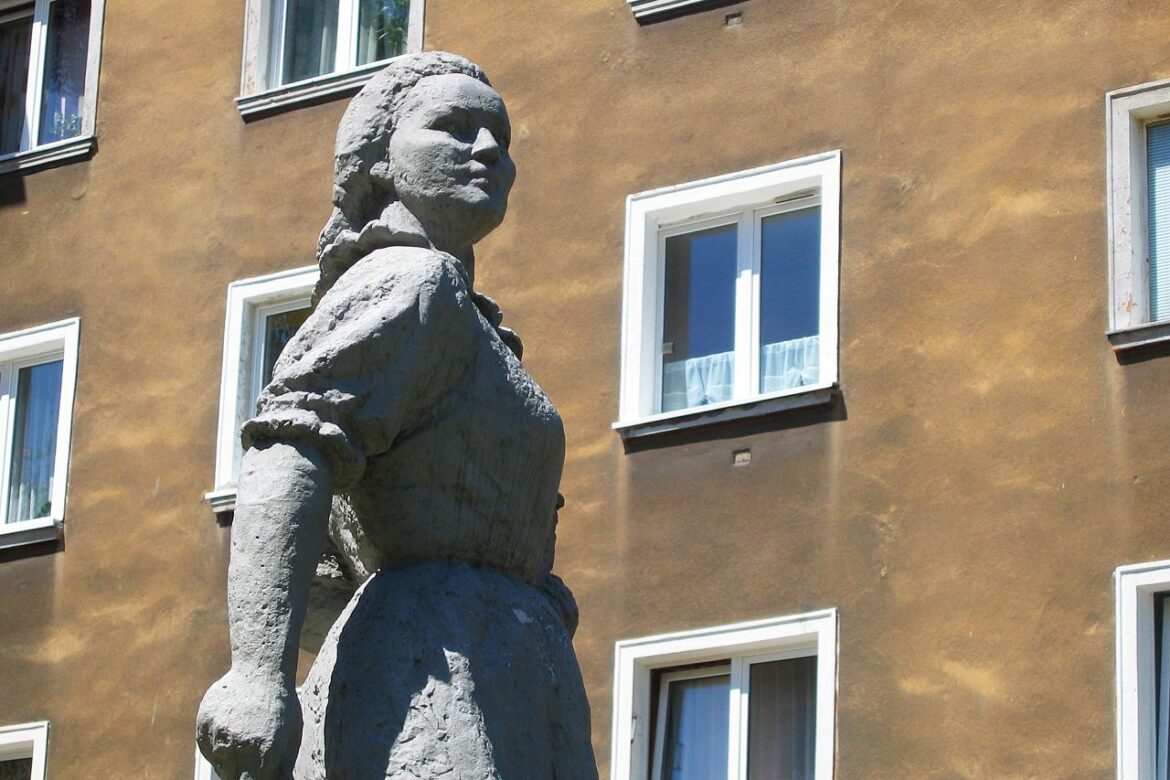The term socialist realism was first used in the Soviet press in 1932, although the creative method behind the term was developed in the 1920s. It involved the complete subordination of artistic activity to the aims of communist ideology, whose centre was in the Soviet Union. The trend also made its home in Poland with the arrival of the Red Army in 1944. The apogee of socialist realism, becoming a propaganda tool of the Communist Party in Poland, was between 1950 and 1953.
Officially, Socialist Realism had been a binding guideline of Soviet cultural policy since 1934, when the First Congress of the Union of Soviet Writers took place in the Soviet Union. Its most ardent advocate was the writer Maxim Gorky. At the time, Soviet art theorists turned against abstractionism, considering it detached from social realities and incomprehensible. They proclaimed the demand for art that was engaged, accessible and reflected the authentic problems of the working masses.
After the end of the Second World War, when Poland fell into the Soviet sphere of influence, this direction was promoted by the Polish Workers’ Party and then by the Łódź-based weekly Kuźnica. As Warsaw was destroyed, Łódź acted for a time as the informal capital of Poland, where cultural life flourished.
The communists began to officially speak of socialist realism in culture in 1947 after their rigged parliamentary elections (https://dignitynews.eu/en/how-was-communist-power-installed-in-poland-falsified-elections-in-1947/). The institutional foundation for the new direction was provided by the Committee of Ministers for Culture at the Presidium of the Council of Ministers. Its task was to take control of cultural life, as well as to take up the fight against the ‘relics of bourgeois art’.
Crucial to the establishment of socialist realism in this period was the speech made by Polish President Bolesław Bierut on the occasion of the opening of a radio station in Wrocław. In his 1947 paper “On the Dissemination of Culture”, the leader of the state called on artists to integrate with society and announced the introduction of planning elements into the broader cultural policy of the state on the Soviet model. The general guidelines presented by Bierut were further developed at the World Congress of Intellectuals for the Defence of Peace in Wrocław, which took place from 25-28 August 1948. The most important speech for creators in the Eastern Bloc was a paper by the chairman of the Union of Writers of the USSR and Stalin’s friend Alexander Fadeyev. In essence, it was a political manifesto against Western culture.
From 1948 onwards, the communist authorities went on the offensive in the field of culture. By a twist of fate, it turned out that the first artistic milieu that had to adapt to the ‘new culture’ were the satirists. Then it was the turn of: writers, called “literaci” in the PRL, visual artists, theatre performers, musicians and composers, and filmmakers.
It is significant that in the wave of change, the communists suppressed positive initiatives, such as the increase in readership among the public, which was largely the success of the Publishing Cooperative “Czytelnik”. From 1944 to 1948, its president was Józef Borejsza (Beniamin Goldberg). Under his chairmanship, the publishing house became a major cultural and educational concern, dubbed the fourth power in Poland, and had numerous pro-reading campaigns to its credit, which were genuinely successful. Borejsza’s position soon became a threat to the communist authorities. In 1948, he was accused of ‘the growth of uncontrolled private initiative in the publishing section’ and of promoting publications representing ‘militant Catholicism’, which weakened his influence.
The heavy pressure of the communists on artists resulted in many works that were unsuccessful, schematic and lacking in artistic merit. They were called occupational novels. The first ‘work of labour’, as it was also called, was published in communist Poland in 1946/1947. It was the novel „Foundations” and was written by Aleksander Pytlakowski. Its title was a loose reference to Fyodor Gladkov’s „Soviet Cement” – the first occupational novel in the Soviet Union.
What were the occupational novels about? Literary researchers generally mention the following leitmotif: under the influence of labour competition, hitherto reckless workers were transformed into socialist heroes. As a rule, at one workers’ meeting, the most active, promoted worker gave a speech that changed the attitude to work of the rest. The transformation caused all the brigades to start using teamwork methods. The pages of such works also featured negative characters, such as shirkers, often exposed as agents of foreign intelligence, saboteurs and marginalised intelligentsia (usually engineers). To further disgrace the ‘class enemies’, Socialist Realist writers attributed drunkenness, sexaholism and a tendency to kleptomania to them.
As far as creations on the silver screen were concerned, the first Polish feature film to qualify as a occupational film was Bright Fields (1947), directed by Eugeniusz Cękalski. It was starred by Kazimierz Dejmek, Hanna Bielicka and Andrzej Łapicki. The audience rejected the picture, and the work became the object of numerous jokes.
The process of gradual withdrawal from socialist realism began in early 1954, influenced by the death of Stalin.





